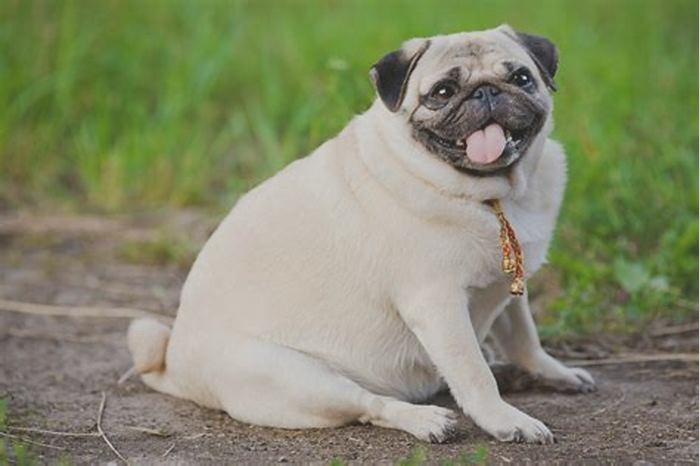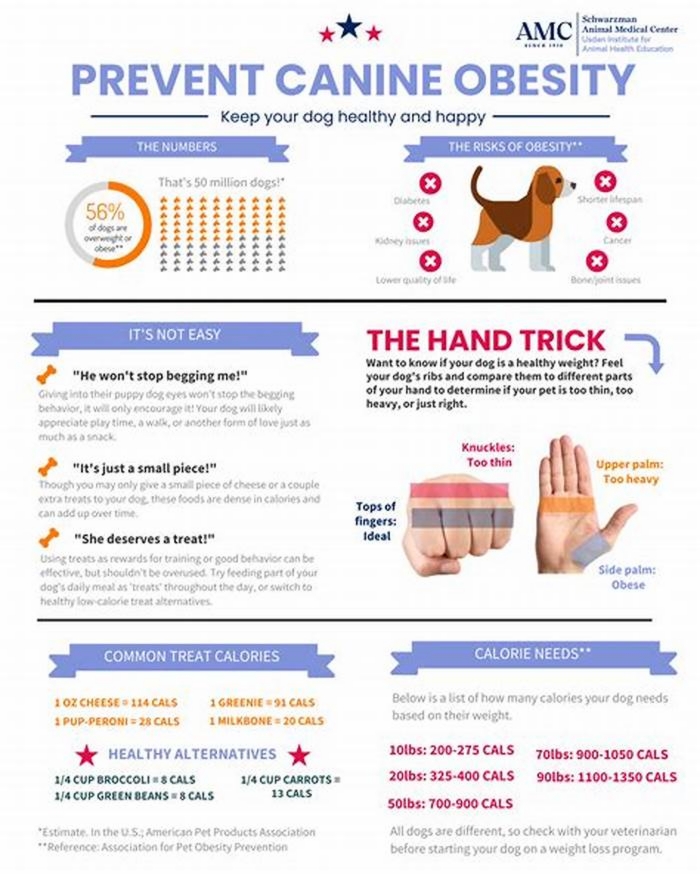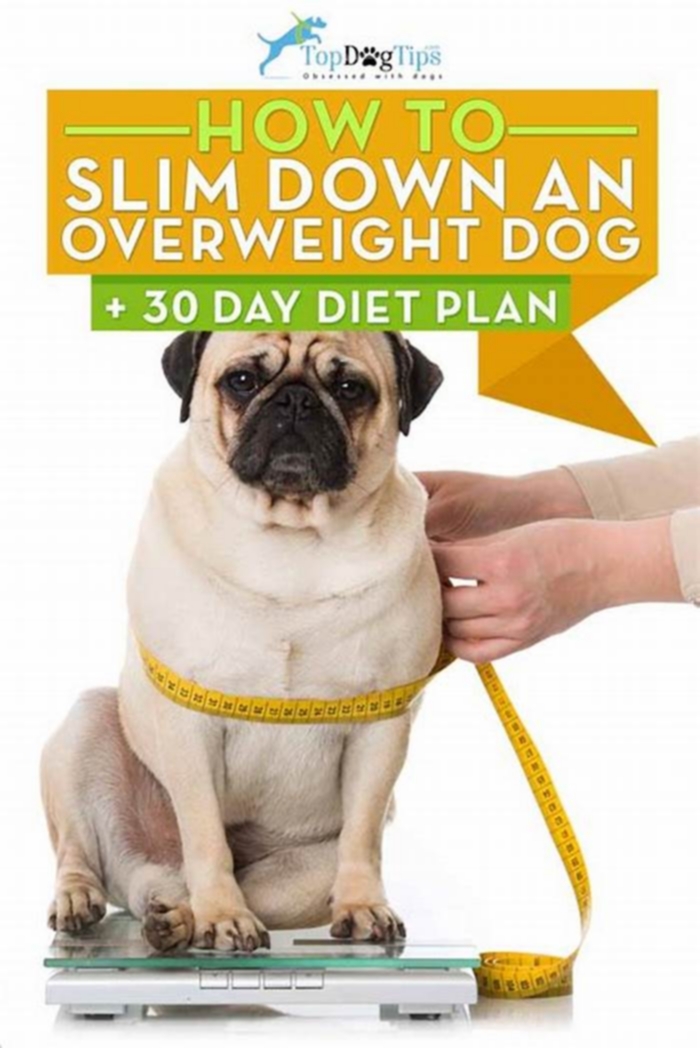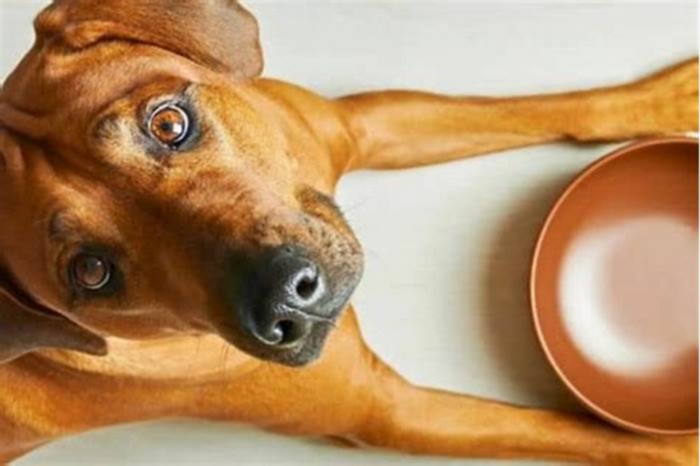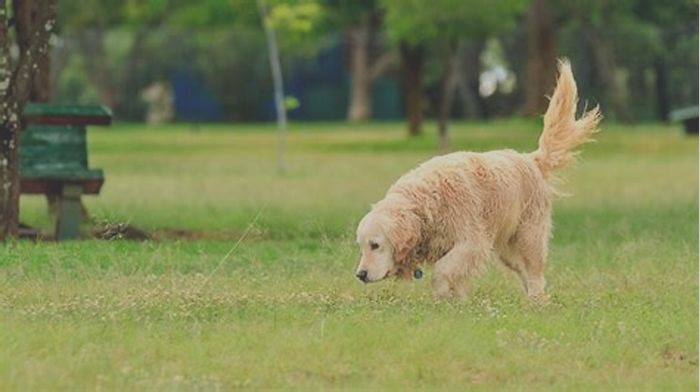obesity in dogs treatment
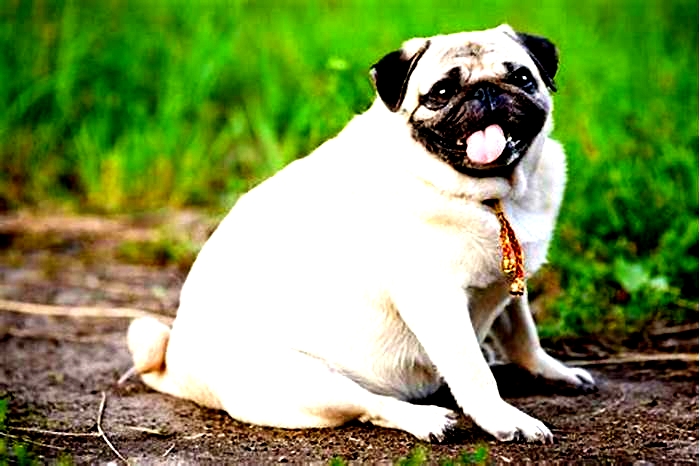
Obesity
A common problem in dogs
Obesity, or excessive body fat resulting in an overweight condition, is sadly an extremely common and preventable problem affecting our pets, with more and more cases seen every year. In fact, canine obesity is the most common nutritional disorder seen in dogs. As with humans, it's caused by an imbalance of taking in more energy than giving out.
How to know if your dog is overweight
Signs your dog is overweight include:
- owners struggling to see or feel their dog's ribs, spine or waistline
- abdominal sagging
- a bigger, rounder face
- a reluctance to go for walks or lagging behind
- excessive panting
- tiredness
- needing help getting in and out of cars
- a refusal to move or play games
Problems associated with obesity
Vets see these problems all too often, with obese pets posing greater risks from anaesthetic and surgical complications, heat or exercise intolerance, complications from cardio-respiratory disorders, hormone problems, skin disease, cancer and urogenital disorders even early death. Canine obesity may even contribute to tracheal collapse and laryngeal paralysis too.
Common canine problems suffered as a result of obesity include:
- Diabetes - where the pancreas fails to secrete enough insulin in order to regulate blood glucose levels
- Heart disease - caused by high cholesterol levels
- Arthritis - directly affecting mobility, making it even harder for your pet to lose weight
The dangers of fat
Until fairly recently, fatty tissue was thought to be just a relatively lifeless energy store and insulator; but we now know it secretes hormones affecting appetite, inflammation, insulin sensitivity and bodily function, as well as influencing water balance and blood pressure, leading to kidney disease and high blood pressure.
Factors contributing to canine obesity
Excess energy is stored primarily as fat but many other factors also contribute to canine obesity including age, sex, reproductive status, inactivity, owner's decisions on dog's food intake, diet and palatability, environment, lifestyle, and any underlying disease that impairs exercise and results in excessive weight gain. Some breeds appear to have a higher incidence of obesity, indicating that genetics may play a major part, with unneutered adult dogs often weighing less than neutered dogs of the same breed too.
Neutering
Neutering is usually carried out at a young age - the same time as a natural decrease in growth and energy needs. Oestrogen also slows down fat production, with predictably decreased levels post spaying, so owners who are unaware of this change and continue to feed their pets the same amount of food will usually see a weight gain in their dog.
Age
Like us, ageing dogs become less active, needing less daily energy too. So it's no surprise that if food intake is not decreased proportionately, they can easily pile on the pounds.
Table scraps
Feeding table scraps and other fatty treats may encourage many pets to overeat and gain excessive weight. In some adult dogs, up to half the calories they need are supplied as human food, particularly in toy breeds.
Not measuring out food
Surprisingly, some owners are still unsure about how much to feed their dog, failing to measure food accurately, and sometimes in denial about how much they feed. The size of cup used to measure dry food and the size of bowl used for feeding also affect the amount of food fed to a dog; with owners given a large cup and bowl often providing more food than when a small cup and bowl are used.
Eating with other dogs
The social setting of meals can also influence eating behaviour, with most dogs increasing their food intake when eating alongside other pets in what's known as 'social facilitation'. That said, being an 'only dog' has also been associated with the risk of obesity, which is probably due to being spoilt rotten by its owners.
Ways to prevent obesity
If your dog is overweight, then carefully start changing their feeding habits by:
- increasing exercise (e.g. taking more frequent or longer walks, or taking up a canine activity such as agility or flyball)
- looking at the type of food they eat, as well as their intake:
- create a feeding plan
- incorporate regular visits to your vet for weight loss advice and to have free weight checks
- record your success
Diet
Diets rich in protein and fibre but low in fat are typically recommended for weight loss, as it gives the dog the feeling of being full, but also provides them with more energy. Replacing traditional treats with carrot sticks is a great, healthy way to start. Ensure every family member is given their own pet feeding instructions and never leave any food lying around.
When to feed
Divide your dog's daily amount into several meals and try not to feed them too late, as they won't burn many calories when sleeping.
New foods
Remember, when introducing a new food, do it gradually over a seven-day period, mixing new food with the old, and always check the daily recommended amount.
Don't give scraps
Avoid feeding any leftovers or scraps from the table.Always check the daily recommended feeding guide on the packaging and weigh out the daily amount at the beginning of the day. You can then give 'treats' from this amount during the day, so you don't overfeed.
Speak to your vet
When your animal starts to lose weight, you will notice they are happier, more inclined to exercise, and have a lot more energy. So don't hesitate to book an appointment with your vet for advice and a healthy eating plan to help your dog battle the bulge.
Article author
This article was written byMarc Abraham, a vet based in Brighton who regularly appears on UK television.
Think your dog may be affected?
If you're worried about your dog's health, always contact your vetimmediately!
We are not a veterinary organisation and so we can't give veterinary advice, but if you're worried about any of the issues raised in this article, please contact your local vet practice for further information.
Find a vet near you
If you're looking for a vet practice near you, why not visit the Royal College of Veterinary Surgeons'Find a vetpage.
Obesity in Dogs
What is Obesity in Dogs?
Obesity can be defined as an excess accumulation of body fat that contributes to disease. Dogs that weigh at least 10% above their ideal body weight are considered overweight, while dogs weighing 20% more than ideal are considered obese. Excess body weight can be a contributing factor in many diseases.
What are the risks associated with obesity in dogs?
Up to 65% of dogs in the United States are considered overweight or obese. Obesity can contribute to many conditions in dogs, including:
Arthritis
Pancreatitis
Kidney disease
Respiratory compromise
Decreased exercise and heat tolerance
Increased risk of cardiovascular disease
Abnormal response to insulin
Increased anesthetic risk
Decreased quality of life
Showing love by showering your dog with treats may actually result in a shortened lifespan and decreased quality of life if the excess calories result in obesity.
Symptoms of Obesity in Dogs
Signs of obesity include:
Weight gain
Less energy than usual
Decreased exercise tolerance
A collar or harness that seems tighter than it used to be
Being unable to feel the ribs, or seeing a waistline (a small tuck in the belly right in front of the hind legs)
Causes of Obesity in Dogs
The most obvious cause of obesity in dogs is overfeeding, which can include the dogs regular wet or dry food, treats designed for dogs, and table scraps or human foods. Inadequate exercise can also lead to your dog becoming overweight. There are some medical conditions that cause obesity, including hypothyroidism and hyperadrenocorticism, also known as Cushings disease.
In addition, certain dog breeds can be predisposed to obesity, including:
Is My Dog Overweight?
If you suspect your dog may be overweight, schedule a weight check and examination with your veterinarian. If there seems to be excess padding over your dogs ribs or you are unable to see a slight tuck-up just in front of the hind legs, chances are good that your dog is carrying excess weight.
How Veterinarians Diagnose Obesity in Dogs
Your veterinarian can obtain your dogs weight and look for trends over time indicating weight gain or loss. A measurement called body condition scoring can also be done.
The two most commonly used body condition scores are a five-point scale (where three is considered ideal) and a nine-point scale (where four to five is considered ideal). Your dog should have an hourglass shape when viewed from above if he is at his ideal body weight.
Your veterinarian may also run some lab work to check for any underlying conditions that may be contributing to weight gain, such as hypothyroidism or Cushings disease. If the weight gain has been very sudden, your veterinarian may also recommend x-rays to check for fluid or masses in the abdomen.
Treatment of Obesity in Dogs
The basic components for treating obesity are exercise and dietary changes. Depending on the severity of obesity and current fitness level, increasing the amount of your dogs daily exercise may need to be done gradually. In general, most dogs can safely exercise for 15-30 minutes per day to start. The duration and intensity can be slowly increased as your dog loses weight and becomes more fit. A simple walk is feasible for most families, but exercise can also include playing fetch indoors or outdoors, swimming, and running. If your dog is older, you may need to do shorter exercise sessions.
Dietary changes should be made with the guidance of your dogs veterinary team. The reduction or elimination of extras like treats and table scraps will be helpful, and a change in type and/or amount of food is often needed. There are many weight loss diets available, and some require a prescription from your veterinarian.
A good goal is weight loss of 1-2% of body weight per week, ideally reducing body fat stores while maintaining lean body tissue. While most dog foods give feeding amount recommendations, these are only guidelines, and individual dogs may need more or less than recommended to maintain ideal body condition. Meal feeding (instead of free choice) is often helpful in controlling caloric intake. It is also important to use a measuring cup to ensure consistent feeding of the appropriate amount of food.
Instead of eliminating treats completely, you may opt to switch to baby carrots, frozen green beans, pumpkin, or lower-calorie dog treats if your veterinarian agrees that these are good options for your dog.
Medications are not typically needed to treat obesity unless your dog has hypothyroidism or Cushings disease, in which case regular exams and lab tests will help determine the appropriate type and dose of medication.
Recovery and Management of Obesity in Dogs
Once your dog has reached his ideal weight, your veterinarian may recommend transitioning to a maintenance diet. It is important to continue regular exercise and limit extra treats and snacks.
Of course, preventing obesity before it even happens would be ideal. This can be achieved by two or three meals per day instead of always having food available, avoiding excessive treats, and ensuring that your dog gets regular exercise. Exercise is not just good for your dogits good for humans and offers physical and emotional benefits for all involved.
While it takes effort to prevent or correct obesity, the benefits of a longer and healthier life are well worth it for you and your dog
References
- Tilley L, Smith F, Sleeper M, Brainard B. Blackwells Five-Minute Veterinary Consult: Canine and Feline. Wiley-Blackwell. Seventh edition; 2021
Featured Image: iStock.com/vadimmmus
- Tilley L, Smith F, Sleeper M, Brainard B. Blackwells Five-Minute Veterinary Consult: Canine and Feline. Wiley-Blackwell. Seventh edition; 2021
Featured Image: iStock.com/vadimmmus
WRITTEN BY
Jennifer Grota, DVMVeterinarian
Dr. Grota decided at an early age that she wanted to be a veterinarian. A native of Indiana, she grew up in a home where animals were...
Diving into Canine Obesity: Causes, Risks, and Management
Obesity in dogs is a serious condition characterized by a substantial surplus of body weight or an extreme amount of body fat. This situation arises when a dogs calorie intake persistently surpasses its energy usage, leading to weight accumulation. Obesity doesnt discriminate; it can afflict Yorkshire Terriers or any other breed, dogs of all sizes, and young or old dogs. It is signified by the build-up of fat deposits throughout the body, giving dogs an overweight or obese appearance.
The impact of obesity on a dogs overall health and well-being can be severely detrimental. It can induce many health complications, such as joint disorders like osteoarthritis, compromised mobility, respiratory troubles, and amplified risk of particular diseases. Moreover, obesity can curtail a dogs life span. Obese dogs may also witness dwindling energy levels, diminished capacity to exercise, and an overall reduction in life quality. This stark contrast to the vitality of lean dogs highlights the importance of addressing and managing canine obesity. Preventing these adverse effects is essential to foster their overall health and prolong their lifespan.
The Consequences of Obesity in Dogs
Obesity in dogs is linked to various health problems and can significantly decrease a dogs quality of life and life expectancy. Risks associated with obesity include:
- Diabetes: Obese dogs are more likely to develop insulin resistance leading to diabetes.
- Heart Disease: Extra weight strains the heart, leading to heart disease and increased blood pressure.
- Arthritis and Joint Problems: Excess weight can put undue stress on a dogs joints, potentially leading to arthritis and other mobility problems.
- Breathing Difficulties: Obese dogs may develop breathing issues and be more prone to heat intolerance.
- Liver Disease: Fat accumulation can lead to liver dysfunction, known as hepatic lipidosis.
- Decreased Immune Function: Obesity can affect a dogs immune system, making them more susceptible to infections.
- Increased Surgical and Anesthetic Risk: Obese dogs are at higher risk during anesthesia and are more likely to have complications during surgery.
- Skin Problems: Folds and creases in the skin of overweight dogs can create an environment for bacterial growth, leading to infections and dermatitis.
- Reduced Lifespan: Studies have shown that obese dogs have a shorter lifespan than their lean counterparts.
- Decreased Quality of Life: Obesity can limit a dogs physical activity and enjoyment of life. It can also contribute to the development of behavioral problems.
Pet owners must maintain regular veterinary check-ups and follow appropriate dietary and exercise regimens to help prevent obesity in their pets.
Causes of Obesity in Dogs
Obesity in dogs often results from a mix of excessive consumption and inadequate physical activity. However, a worrying trend reveals that 25-30 percent of the overall canine population is considered obese, rising to 40-45 percent in dogs aged five to 11. These alarming rates can stem from a pet owners overindulgence, lack of portion control, or offering their dog high-calorie treats or human food. Weight gain ensues when a dog ingests more calories than it burns for energy. Certain dog breeds also have a higher predisposition to weight gain, indicating that genetics may play a part.
Alongside overeating, insufficient exercise is a key culprit contributing to obesity within the canine population. Many dogs dont receive the requisite amount of physical activity needed to offset the calories they consume. This holds particularly true for dogs residing in urban environments, where opportunities for running and playing might be restricted. Age also comes into play as older dogs are generally less active and more susceptible to weight gain. Other factors contributing to canine obesity include underlying health conditions such as hypothyroidism and Cushings disease, which can lead to weight gain.
For pet owners concerned about their dogs weight, obtaining a body condition score using a specific scoring system can be beneficial. This tool helps owners evaluate if their dogs may be considered obese, and its a critical step in managing their pets weight and overall health. Through understanding the causes and effects of obesity, pet owners may make informed decisions on their dogs diet and exercise regimes, helping their pets maintain a healthy weight. In addition, neutering your pet may also influence weight, and adjusting their diet accordingly post-surgery is important.
How Do You Know If Your Dog is Obese?
Determining if your dog is obese involves a combination of visual evaluations and physical examinations. Here are some guidelines to help discern if your dog might be dealing with obesity, an increasingly prevalent issue in pets:
- Visual Evaluation: Begin by observing your dog from an overhead perspective. Dogs within a healthy weight range should present an hourglass silhouette, denoting that their abdomen is slimmer than their chest and hips. Conversely, an obese dog may exhibit a broad and flat back, similar to a tabletop, indicating a potential overweight status.
- Feeling for Ribs: Gently place your hands on the flanks of your dogs torso. If your dogs ribs are challenging to detect under its coat, your pet might be carrying excess fat, which can cause serious health problems.
- Inspect for Abdominal Tuck: From a side viewpoint, your dog should exhibit a discernible abdominal tuck or an upward slope of the belly; an obese dog may have a minimal or non-existent abdominal tuck.
- Backbone and Hip Bones: While these bones should not be visually prominent, you should be able to palpate these bones beneath your dogs fur. If you cannot detect them through touch, its a warning sign that your dog might be obese.
- Consult a Veterinarian: If you find it challenging to make a definitive judgment regarding your dogs weight, its advisable to consult a veterinarian. They can precisely assess the health effects of your dogs current weight and guide a suitable diet and exercise plan to effectively manage your dogs weight and overall health. Through these steps, you can actively prevent and mitigate the adverse health effects of obesity in your dog.
Diagnosis of Dog Obesity
Establishing a diagnosis of obesity in dogs necessitates a comprehensive approach, as mere weight measurement can be misleading due to differences in body composition among breeds. Veterinarians typically employ the following methods for a detailed assessment.
- Assessing Body Weight This is the most straightforward initial step in diagnosing obesity. The vet measures and juxtaposes the dogs weight with the optimal weight range specified for the particular breed and age. However, a dogs weight alone is not enough to determine if obesity is a serious concern.
- Employing Body Condition Score (BCS) The BCS is a hands-on and visual assessment of a dogs body fat and muscle mass distribution. The scoring system ranges from 1 to 9, with one indicating emaciation, 4-5 considered ideal, and nine indicating obesity. Additionally, the vet will scrutinize your dogs overall silhouette, rib coverage, waist, and the presence of an abdominal tuck.
- Executing Body Fat Index Measurement This is a highly accurate method, typically necessitating advanced tools such as a DEXA (Dual Energy X-ray Absorptiometry) scan to quantify body fat percentage correctly.
- Conducting a Health Assessment This involves an appraisal of the dogs overall health, focusing on aspects like mobility, respiratory functions, and any pre-existing health conditions that may be affected by weight.
- Reviewing History The vet will examine the dogs dietary habits, including the type of food, feeding quantity, meal frequency, and the dogs level of physical activity.
Post these comprehensive evaluations, if a dog is determined to exceed its ideal body weight and registers a high Body Condition Score, it might be diagnosed as overweight or obese. This process is how obesity is diagnosed by measuring various aspects, underlining that obesity is a serious condition that can impact overweight pets severely.
Treatment of Obesity in Dogs
Treatment strategies for overweight dogs are typically individualized, factoring in age, breed, weight, health status, activity levels, surroundings, nutrition, and lifestyle. The most widely recommended treatments incorporate the following:
Nutritional Modification
Adjustments to a dogs diet form a pivotal part of the strategy for weight reduction. Pet nutrition experts or veterinary internal medicine specialists often advise a diet lower in calories but abundant in fiber and protein, keeping fat content minimal. This dietary balance assists the dog in feeling full, even while consuming fewer calories. Controlled portion sizes and limited treat offerings are commonly recommended. Additionally, a slow transition from the usual dog food to one specifically designed for weight loss may be suggested.
Physical Activity
Exercise is a key component in a weight loss program as it promotes higher energy expenditure and consequently aids in weight reduction. Vets often design a customized activity schedule tailored to the dogs physical state and capabilities. For example, it may begin with brief, mild walks, slowly increasing in distance and intensity over time. Incorporating playtime is also an effective and enjoyable way to get dogs moving more. Maintaining a healthy body weight for your dog is important.
Behavioral Modifications
To combat obesity, vets may advise behavioral adjustments. These could include separate feeding schedules for pets to prevent food snatching, removing food after a designated time to discourage constant grazing, and using puzzle toys to slow down the pace of eating. In addition, behavioral adaptations can help substitute unhealthy food-related behaviors with more beneficial activities.
Consistent Monitoring and Modifications
Consistent weight checks and body condition scoring are integral to an obesity management plan. This process enables vets to monitor the dogs progress and modify the diet or activity schedule. Depending on the progression of weight loss, vets may either increase or decrease calorie consumption or adjust the intensity or duration of exercise to ensure optimal weight loss.
Addressing Underlying Health Concerns
If the dogs obesity stems from an underlying health issue like hypothyroidism or Cushings disease, managing this condition becomes a critical aspect of the treatment plan. Treatments may involve medication, surgery, or alternative interventions depending on the specific ailment. Addressing these underlying problems can tackle one of the primary causes of the dogs weight issue, rendering other elements of the treatment plan more effective.
Remember, each dogs needs are unique, and strategies that work for one might not be successful for another. Therefore, its essential to approach weight loss gradually and consistently, maintaining healthy body weight as a long-term goal. Involving a vet ensures that the weight loss program is safe and achieves successful weight loss.
How Can I Adjust My Dogs Meals to Help Him Lose Some Weight?
Preventing obesity in your dog necessitates calculated alterations to their feeding routine. As a dog owner committed to pet obesity prevention, you should initially consult your vet to determine your dogs applicable daily calorie requirement, considering attributes such as breed, age, and current weight. Next, transition to dog food that is low in calories but abundant in high-quality nutrients. Dog food high in protein and fiber can help your dog feel full and satisfied. Furthermore, establish a routine where your dog receives meals with measured portions at set times rather than unrestricted access to food, which can better manage their calorie consumption.
Treats, while enjoyable for your pet, can be a significant contributor to obesity, so their intake should be moderated and low-calorie options considered. Treats should constitute at most 10% of your dogs daily calorie intake. Fruits and vegetables can act as healthier snack alternatives, but avoid potentially toxic ones like onions, grapes, and raisins. Keeping your dog well-hydrated is also vital, as water not only aids in digestion but can also assist in controlling hunger.
If your dog eats too quickly, consider using a slow feeder bowl to regulate their eating speed. Always remember that any major dietary changes should be deliberated with your vet for tailored advice and continuous monitoring in the name of obesity prevention.


